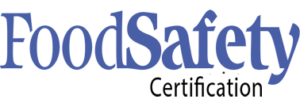The Food Regulations in Saskatchewan
Regina food establishments are governed by The Food Regulations, part of the 1994 Public Health Act of Saskatchewan. The act requires all facilities that handle food to have its employees trained in Food Safety in Regina and sanitation. Specifically, the act requires that a trained and certified staff member must be present at all times when food is being prepared, stored, and served. In regards to the number of staff members who have to be trained, the final say actually rests on the Public Health Inspector who is assigned to grant the establishment a health permit. If an establishment handles high-risk food or the area itself is high-risk, the inspectors may require more staff members to train in food safety.
Note: The Food Regulations do not only focus on food safety training, they cover all areas of safety in food establishments – from personnel hygiene and health to licensing and health permits.
FoodSafe training in Regina First Aid
If you need training and certification in food safety, we have two levels available at Regina First Aid. We encourage everyone to apply for food safety training, not just food service workers and food service supervisors; if you are interested in learning about food safety and sanitation, just head over to the Regina First Aid website to sign up or visit us in person.
FoodSafe Level 1
The first level of food safety training is available in (1) eight-hour single sessions or (2) two four-hour sessions, both completed in one day. The program is targeted towards direct food handlers, supervisors and managers, and even home cooks who want to learn about safety in the food handling process. The the following topics are included:
- Basic microbiology
- Foodborne illness
- Sanitation and general maintenance of the workplace
- Personal hygiene
- Pest control
If you wish to take the second level of food safety training, the first level is a prerequisite.
FoodSafe Level 2
Unlike the first level of training, the second level takes two days to complete. Each day has seven total class hours, either in a single seven-hour session or two four-hour and three-hour sessions. A student needs to complete 14 hours of training to be certified for second level food safety. This level is targeted ideally for supervisory and management staff of food establishments, because it focuses on:
- Food safety training for the staff
- Management skills
- Food safety planning
- Design of the establishment
- General maintenance
Food safety: hand hygiene
Proper hand hygiene can be enough to prevent the spread of illness-causing microorganisms in food. Despite being a simple skill, it is one that is typically overlooked in a the food preparation process. Hand hygiene involves three techniques – hand washing, hand rubbing, and wearing of gloves. Proper hand washing is done with soap and water while hand rubbing is done with a sanitizing agent (such as alcohol). These are very important when handling food, especially food that is raw. Contamination can easily happen if a food service worker doesn’t wash his or her hands before and after touching something raw or dirty.
